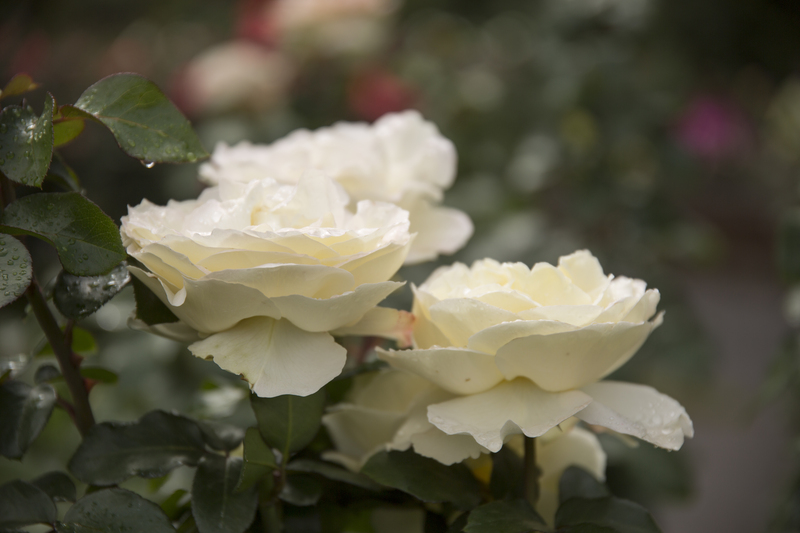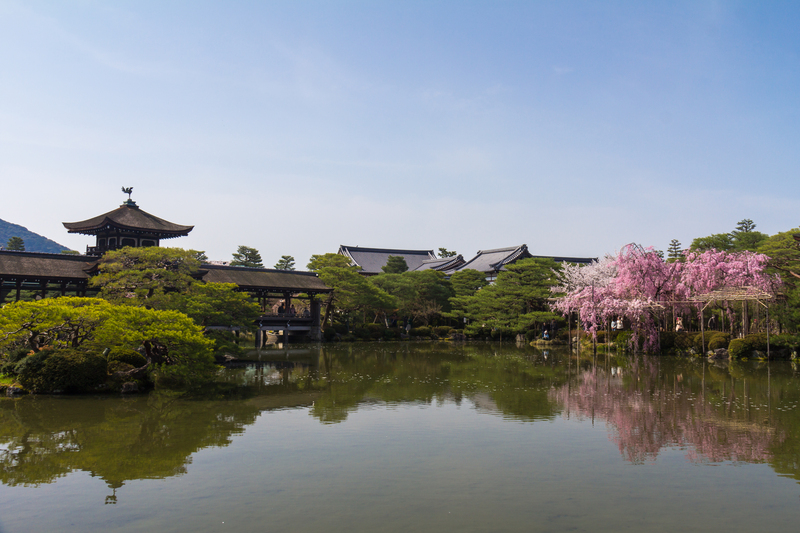Evergreen Climbers for Shade: Where Light and Dark Meet Green
Posted on 26/05/2025
Evergreen Climbers for Shade: Where Light and Dark Meet Green
Discovering evergreen climbers for shade can turn a dull, shady corner of your garden into a vibrant oasis. These versatile climbing plants offer year-round color, interesting textures, and vital cover for wildlife. Whether you have north-facing walls, shaded pergolas, or sheltered fences, choosing the right shade-loving climbing plants can bring dramatic results where light and dark converge. In this comprehensive guide, we delve into the best evergreen climbers for shady spots, essential care tips, and expert design ideas to inspire every gardener.
Why Choose Evergreen Climbers for Shady Gardens?
- All-Year Interest: Evergreen climbers retain their leaves in winter, providing long-lasting greenery and screening.
- Wildlife Support: These plants offer shelter and food for birds, pollinators, and insects even in the off-season.
- Low Maintenance: Many shade-tolerant climbers require minimal care once established and help suppress weeds.
- Aesthetic Appeal: They soften the hard lines of structures, fences, and walls, creating a lush, seamless transition between shaded and sunny areas.
For any garden lover, embracing evergreen climbing plants for shade opens up new possibilities for design and biodiversity. Shaded environments no longer need to be barren or lifeless--light and dark meet green in the embrace of these stunning climbers.

Top Evergreen Climbers for Shade
The secret to a successful shady garden lies in selecting the right evergreen climbers that tolerate low light and thrive with less sun. Here, we highlight some of the very best options celebrated by horticulturists and garden designers.
1. Hedera helix (English Ivy)
English Ivy is an iconic choice among shade evergreen climbers. Known for its hardiness, it tolerates deep shade, poor soil, and pollution. Its small, glossy leaves bring a formal look to shaded walls and fences.
- Growth: Rapid spreader; ideal for covering large surfaces.
- Preferred Conditions: Deep to partial shade; moist, well-drained soil.
- Benefits: Excellent for underplanting trees or as living ground cover in dense shade.
- Care: Occasional pruning; can be invasive--plant with borders or control its spread.
2. Trachelospermum jasminoides (Star Jasmine or Confederate Jasmine)
Despite its tropical look, Star Jasmine is surprisingly hardy. It thrives in partial shade, rewards with fragrant white flowers in summer, and holds glossy, deep green leaves all year.
- Growth: Moderate; can reach up to 6 meters.
- Preferred Conditions: Partial shade, sheltered from harsh winds, fertile soil.
- Benefits: Scented blooms attract pollinators and offer a sensory delight to shady patios.
- Care: Prune lightly after flowering for shape and health.
3. Lonicera japonica 'Halliana' (Japanese Honeysuckle)
Japanese Honeysuckle is beloved for its clusters of white, sweetly perfumed flowers that turn yellow with age. This evergreen shade climber is robust and widely adaptable.
- Growth: Fast; quickly covers trellises, arches, or walls.
- Preferred Conditions: Partial to full shade; moist but well-drained soil.
- Benefits: Provides nectar for bees even in shaded gardens.
- Care: Prune after flowering to manage size and encourage bushiness.
4. Pyracantha (Firethorn)
A thorny but handsome choice, Pyracantha can be trained as a wall shrub or climber. It boasts spiky evergreen leaves, frothy white spring blooms, and autumn berries in vibrant red, orange, or yellow.
- Growth: Vigorous; ideal as a security plant or privacy screen.
- Preferred Conditions: Tolerates shade, prefers light shade; moist, fertile soil.
- Benefits: Berries feed birds; dense cover protects wildlife.
- Care: Prune after fruiting; wear gloves to protect from thorns.
5. Euonymus fortunei (Wintercreeper)
Versatile and resilient, Euonymus fortunei can sprawl as groundcover or climb if supported. Its small, leathery, variegated leaves bring brightness to shade.
- Growth: Moderate to vigorous; self-clings to walls or fences.
- Preferred Conditions: Deep, dry shade to partial sun; any well-drained soil.
- Benefits: Excellent for shaded building bases or north-facing boundaries.
- Care: Minimal pruning needed; trim to keep tidy or shape as desired.
6. Clematis armandii
Clematis armandii is a rare evergreen climber for shade with bold, leathery leaves and star-shaped, scented white flowers early in the season.
- Growth: Fast-growing; quickly establishes on walls or pergolas.
- Preferred Conditions: Partial shade, especially well-drained soil, roots shaded and cool.
- Benefits: Showy blooms at a time when few climbers flower; hides unsightly structures.
- Care: Prune after flowering if necessary to maintain size and health.
7. Passiflora caerulea (Blue Passion Flower)
This exotic beauty produces intricate, otherworldly flowers and retains much of its foliage in sheltered, mild gardens. While not fully evergreen everywhere, it offers semi-evergreen coverage in shade.
- Growth: Rapid; ideal for covering trellises quickly.
- Preferred Conditions: Partial shade, well-drained soil, shelter from frosts.
- Benefits: Magnificent flowers attract bees; edible but often seedy fruits.
- Care: Prune to control size after flowering; mulch roots in colder regions.
How to Grow and Care for Evergreen Climbers in Shade
Growing evergreen climbers for shady gardens requires some know-how to encourage lush, healthy growth. Here are essential tips for success:
1. Choose the Right Plant for Your Level of Shade
- Deep shade: Areas receiving no direct sunlight--consider Hedera helix and Euonymus fortunei.
- Partial shade: Dappled light, morning/evening sun--try Trachelospermum jasminoides, Clematis armandii, or Passion Flower.
- Dry shade: Under trees or eaves--opt for vigorous, drought-tolerant climbers.
2. Soil Preparation is Key
- Enrich soil: Dig in organic matter, such as compost or leaf mold, to improve drainage and fertility.
- Mulch: Apply a layer of mulch to keep roots cool and moist.
3. Providing Support Structures
- Climbing types: Self-clinging (ivy, Euonymus) need minimal support; Twining climbers (honeysuckle, clematis) require trellis or wires.
4. Watering Routine
- Young plants: Keep well-watered during dry spells, especially in the first season after planting.
- Established plants: Less frequent watering, unless under extended drought.
5. Pruning and Containment
- Prune after flowering or fruiting: Most evergreens flourish with annual trimming to maintain shape and vigor.
- Manage spread: Some climbers, like ivy and honeysuckle, can be invasive--cut back regularly along borders.
Design Ideas - Greening Up Shade With Evergreen Climbers
Embrace the unique magic where light and dark meet green using these design approaches:
- Tapestry Walls: Create breath-taking living walls by mixing several shade-tolerant evergreen climbers for varied texture and leaf color.
- Arches and Pergolas: Let climbers wrap around structures to form shady, woodland retreats perfect for summer relaxation.
- Vertical Wildlife Gardens: Combine dense cover with berry-bearing species (like Pyracantha) to attract birds and pollinators, adding life and sound to shady spaces.
- Screening Unsightly Areas: Use lush, year-round coverage to hide fences, old sheds, or utilities in a stylish, eco-friendly way.
- Evergreen Tunnels: Frame entrances or pathways with climbers for dramatic, verdant walkways regardless of sunlight availability.
Combining Evergreen Climbers with Other Plants
For best effect, pair shade-loving climbers with other shade perennials like hostas, ferns, hellebores, or spring bulbs. This creates a layered effect that offers seasonal interest and resilience.
Common Problems and Solutions with Shade Evergreen Climbers
1. Poor Flowering
- Possible causes: Too much shade, nutrient-poor soil, or incorrect pruning.
- Solution: Move plant to a brighter spot, feed with slow-release fertilizer, prune only lightly after flowering.
2. Leggy Growth
- Possible causes: Plants reaching for light, lack of pruning, or overcrowding.
- Solution: Prune to encourage bushy growth, thin out competing plants, increase light where possible.
3. Pests and Diseases
- Possible causes: Damp, shaded conditions can foster mildew or aphid infestations.
- Solution: Ensure good air circulation, avoid waterlogging, and use organic pest control methods if needed.

Frequently Asked Questions About Evergreen Climbers for Shade
- Are all evergreen climbers suitable for deep shade?
No. Some, like Hedera helix and Euonymus fortunei, tolerate near-darkness. Others, such as Clematis armandii, perform better in partial shade. - Will evergreen climbers damage my walls?
Self-clinging species can sometimes invade mortar in brickwork. To prevent damage, support climbers on trellises set away from the wall, or check masonry regularly. - When is the best time to plant evergreen climbers in shade?
Early autumn or spring are ideal. This allows roots to establish with cooler, damper conditions. - Do evergreen climbers in shade need feeding?
Yes. Annual application of compost or a slow-release, balanced fertilizer helps maintain lush growth in challenging shady sites.
Conclusion: Celebrate Shades of Green in Every Corner
With the right selection and care, evergreen climbing plants for shade bring enduring beauty, wildlife interest, and a tranquil atmosphere to even the darkest parts of your garden. Whether you prefer classic English Ivy, the scented charm of Star Jasmine, or the architectural drama of Clematis armandii, there's an evergreen climber to suit every taste and situation.
Remember, shade is not a compromise but a creative opportunity. By welcoming these remarkable climbers, you can transform your shaded walls and boundaries where light and dark meet green. Let your garden's shadowy places come alive--lush, layered, and green all year round.

